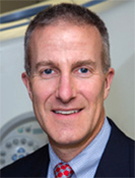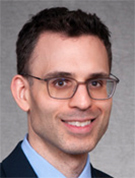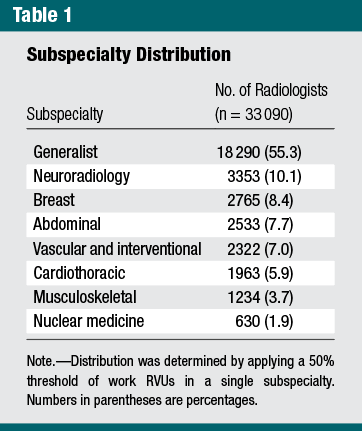Study Shows More than Half Radiologists are Generalists vs. Subspecialists
Researchers seek to "right-size" the radiology workforce to match patient and physicians


Understanding the U.S. workforce of more than 30,000 radiologists is crucial for institutions planning training programs, practices making staffing decisions and patients looking for a doctor who can meet their needs.
It is a subject that Richard Duszak, MD, professor and vice chair for Health Policy and Practice, Department of Radiology and Imaging Science, Emory University, Atlanta, and Andrew B. Rosenkrantz, MD, professor and director of Health Policy at New York University (NYU) Langone Health, have been researching for a number of years.
The most recent study by Drs. Duszak, Rosenkrantz and colleagues, “Generalist versus Subspecialist Characteristics of the U.S. Radiologist Workforce,” was published in the April 2018 issue of Radiology.
“Overall, the goal is making sure we right-size our radiology workforce and provide the best services to our patients at the right time,” Dr. Duszak said. “It all sounds a lot easier than it is.”
In their study, researchers determined that while there has been an increased focus on radiology subspecialization, 55 percent of radiologists predominantly practice as generalists.
“While there is a lot of talk about increasing radiologist subspecialization, we have to recognize that generalists still represent slightly over half of radiologists practicing today,” said Dr. Rosenkrantz, who also serves as section chief of abdominal imaging and director of prostate imaging at NYU.
The research combined a variety of public datasets to study 33,090 radiologists across the country who billed Medicare between 2012 and 2014. Researchers used a validated classification system to map services to seven subspecialties and quantify subspecialty-focused work on the basis of relative value units (RVUs). Radiologists with more than half of their billed work RVUs in a single subspecialty were designated subspecialists; the remainder of radiologists were classified as generalists.
Among radiologists practicing as majority subspecialists, neuroradiologists (10 percent of all radiologists) and breast imagers (8.4 percent) were the most common, the study showed.
“Right-Sizing” the Radiology Workforce
Dr. Duszak said that variables including where doctors are trained and choose to live versus where patients live and the types of services they need can lead to a mismatch in the radiologist/patient relationship. Dr. Duszak defines “right-sizing” as “matching patient needs to physician talent, no matter where they live.”
While many radiology thought leaders are pushing for more focused subspecialization, which can be successful at a large academic or research institution in an urban environment, that focus is not always the best approach in other parts of the country.
“If a patient lives in a rural area with only five radiologists covering a portion of a state, not everyone can be subspecialized,” Dr. Rosenkrantz said. “An idealistic answer may be that more radiologists are subspecialists. The realistic answer is that a robust generalist radiologist workforce is needed to provide proper coverage and imaging to people all over the country.”
Length of time practicing, the size and location of the practice, gender and academic status were all factors in a radiologist’s decision to subspecialize or not, the study showed. For example, radiologists with fewer years in practice were more likely to subspecialize.
And while slightly more than half of the nation’s radiologists practice as generalists, those doctors still devote about one-third of their time to a specific subspecialty as well, the study found.
“Radiologists who are just finishing training today can look at this research and understand that they should be prepared to handle more than just that one subspecialty and that their jobs might change over time,” Dr. Rosenkrantz said.
Research Analyzes Radiology Workforce by Location
Another recent study by Drs. Duszak, Rosenkrantz and colleagues published in the in the Journal of the American College of Radiology (JACR) analyzed geographic variation in terms of the extent of subspecialization of radiologists in 3,143 U.S. counties.
The sample of radiologists in the Radiology and JACR studies were drawn from the same underlying data source and used the same criteria for designating a subspecialist and a generalist.
Authors determined that disparities do exist at the county level in terms of each community’s overall radiologist supply and in the extent of subspecialization of radiologists in those communities.
Results showed that counties with at least one Medicare-participating radiologist had significantly larger populations, lower rural percentages, higher household incomes, higher mammography screening rates and lower rates of premature deaths. Among counties with at least one Medicare-participating radiologist (41.5 percent), the average percent of radiologists in the counties being subspecialized was 19.2 percent to 26.5 percent.
“Although many counties had no Medicare-participating radiologists, a far larger number of counties lacked a radiologist with a majority subspecialty practice,” Dr. Duszak said.
While not every county in rural America needs every type of subspecialized radiologist, such disparities may have an impact on patients, Dr. Duszak said.
“Our services are often unevenly distributed around the country, partially because the technology is sometimes so expensive that only centers of critical mass can afford to offer these services,” Dr. Duszak said.
“Both teleradiology and regional consolidation initiatives could help address this issue,” Dr. Rosenkrantz said.

Web Extras
- Access the Radiology study, “Generalist versus Subspecialist Characteristics of the U.S. Radiologist Workforce,” at RSNA.org/Radiology.
- Access the JACR study, “A County-Level Analysis of the U.S. Radiologist Workforce: Physician Supply and Subspecialty Characteristics,” www.JACR.org.